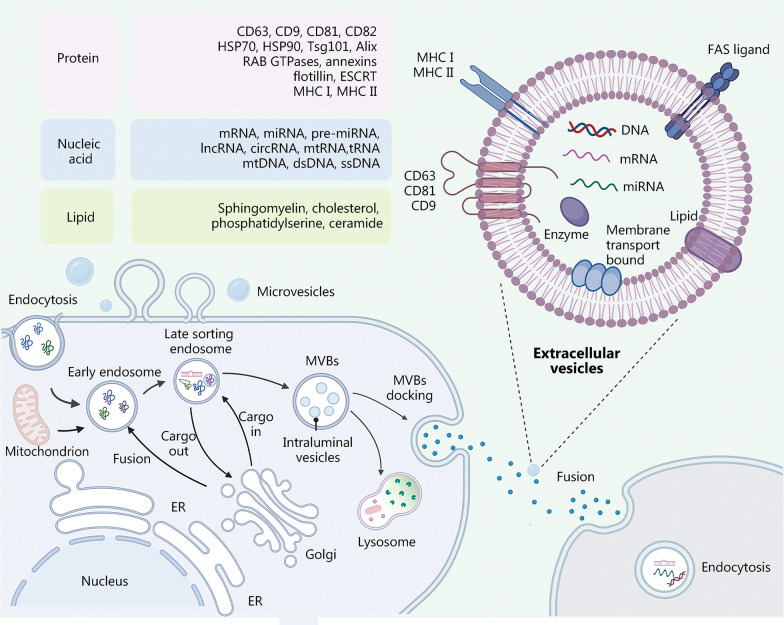Fig. 3.
Process of extracellular vesicles (EVs) biogenesis and the molecular composition of EVs are shown as follows: (1) various components of the extracellular environment, including proteins, lipids, and small molecule metabolites, are endocytosed to form early endosomes; (2) the early endosomes are transformed into late endosomes that in turn form multivesicular bodies (MVBs); (3) MVBs are formed into EVs by fusion with microtubules and the cytoskeleton to the plasma membrane. Otherwise, a part of the MVB is transported and merged with the lysosomes to degrade the cargo. EVs enter the recipient cell through various pathways, including endocytosis, macrophage uptake, phagocytosis, and direct fusion with the plasma membrane. It was created utilizing the templates on BioRender.com as a reference. CD cluster of differentiation, HSP heat shock protein, Tsg tumor susceptibility gene, Alix apoptosis-linked gene 2-interacting protein X, RAB Ras-like proteins in brain, GTPases guanosine triphosphate hydrolases, ESCRT endosomal sorting complex required for transport, MHC major histocompatibility complex, mRNA messenger ribonucleic acid, miRNA micro ribonucleic acid, lncRNA long non-coding ribonucleic acid, mtRNA mitochondrial ribonucleic acid, tRNA transfer ribonucleic acid, dsRNA double-stranded ribonucleic acid, ssDNA single-stranded deoxyribonucleic acid, FAS tumor necrosis factor receptor superfamily member 6, DNA deoxyribonucleic acid, ER endoplasmic reticulum

